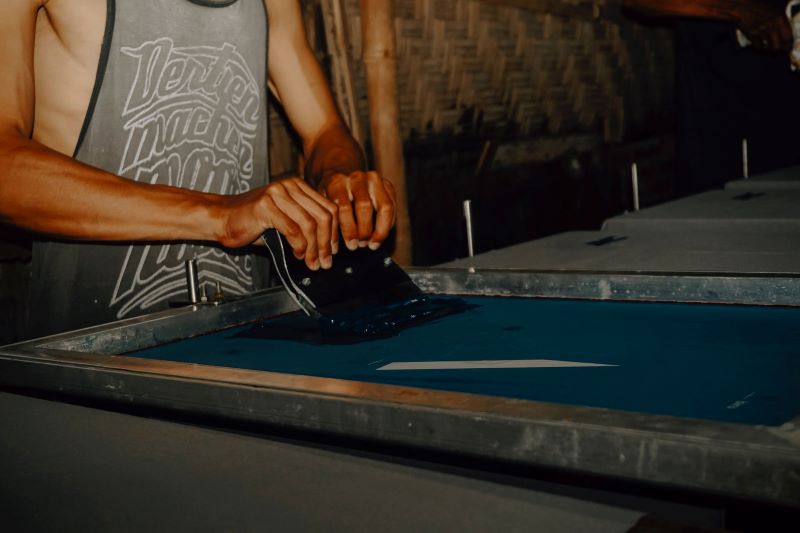
When choosing ink for your custom t-shirt screen printing, there’s much to consider. Do you need to mix a custom shade? What kind of fabric are you printing on? Do you have the right equipment for that specific ink? While water-based inks are gaining favor, Plastisol is one of the classic screen printing inks. To determine which is best, you need to understand the nuances of each ink.
What are Water-Based Inks?
They are one of the newer inks for screen printing and are supposed to be more eco-conscious. They soak into the fabric to create a soft, flexible ink layer on whatever you print with little to no chemical usage. However, the water in the ink evaporates once you expose it to air, so you are on the clock once you start your printing process.
What is Plastisol Printing?
Essentially, plastisol is a liquid plastic, as its name suggests. It is PVC particles suspended in a liquid plasticizer. This creates a highly flexible and durable easy-to-work-with ink. It doesn’t evaporate, so you can start and stop printing as you wish. You can use it to create special effects or color match nearly any shade and layer to cover up mistakes.
Differences in T-Shirt Printing with Plastisol vs. Water-Based Ink
Your printing equipment remains similar for these two inks. You will need a press, emulsion, scoop coaters, and more. However, there are a few specific equipment and technique you’ll need for each that don’t overlap:
Curing Device Techniques
Most of your equipment will be the same to print with these two inks. However, you will need a specific curing device if using water-based ink. Plastisol can cure easily with heat presses, conveyor dryers, or flash dryers. When working with water-based ink, you must ensure all the water evaporates with a curing device that can heat up to 330 degrees. Even if your device can handle that temperature, there’s still a finesse and process to get the water-based ink to cure correctly.
Exposure Requirements
Like with curing techniques, water-based inks are trickier for screen exposure. Plastisol inks aren’t as abrasive and don’t need water-resistant emulsions, but water-based inks do. If you don’t have the correct emulsion or have your exposure or drying process perfected, the water-based ink can break down the screen during your print run—the better the screen quality, the less likely you are to run into issues with either ink.
Supplies for Cleaning Up
You can easily clean water-based inks with water or a water-based ink degrader and cleaner. You need an oil-based cleanser to clean up plastisol, as water won’t touch it. If you plan to print with both, you’ll need to have a variety of cleaners on hand.
Contrasting the Finished Products
Beyond the differences in printing, you will get two very different products with varying costs and environmental impacts after printing with these two ink categories.
Durability and Cost
While both the inks are durable, there are some caveats to their long-lasting qualities. Plastisol is more likely to crack under high heat because of its plastic origins, while water-based inks tend to wash away and fade more quickly. They are both durable when cared for correctly, while plastisol will outlast water-based ink if you plan to wash frequently and air dry. Plastisol typically comes out on top for cost when considering supplies needed, production costs, workability and yield, waste, etc.
Breathability and Eco-Friendliness
In terms of breathability, water-based ink is the clear winner. Since the fabric incorporates the ink, there isn’t a thick coating like plastisol blocking airflow. However, eco-friendliness is a bit of a toss-up. Yes, plastisol contains PVC, but some newer versions are PVC-free. Water-based inks may have plastics in the form of acrylics and binders. They can also rely on solvents with alcohol and formaldehyde ingredients.
Because of the higher temperature curing process with water-based inks, they typically require more energy to print. They often are lower yield, generating more waste that mistakenly can wind up down the drain if not disposed of properly.
Versatility and Colors
Plastisol beats water-based inks in this category. Because of its opacity and thickness, you can use plastisol to color-match nearly every color imaginable. It will be incredibly vibrant, standing out on light and dark background colors. Because it sits on top of the fabric, you can print on nearly any material and mix it with other inks and additives. Blended textiles don’t absorb the water-based ink as well as 100% cotton fabrics do. Again, because of the water-based ink’s absorption, it only pops on lighter backgrounds.
While plastisol is typically the more versatile, inexpensive, and durable option for your screen printing needs, it depends on what you want. Plastisol may be where you want to start if you train inexperienced printers, even if it means more cleanup. If you or your customers are looking for a super soft, nearly impossible to tell it’s printed custom shirt, water-based ink may be your best bet. Ultimately, it comes down to what works best for you, your equipment, and your customers, as both inks have advantages and disadvantages.
Robert Fisher is the founder and CEO of Thrive Screen Printing and brings extensive experience in the screen printing and fulfillment industry.

